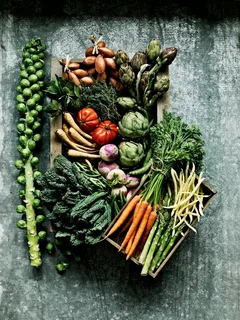The early years of human beings are a whirlwind of growth and development. From the first gummy grin to those wobbly first steps, every milestone marks a leap forward in a child’s journey. Fueling these incredible transformations requires a steady stream of essential nutrients. But while mealtimes are crucial, baby snacks play an equally important role in keeping little ones energised and on the go. This column will serve as an essential guide for all new parents.
Table of Contents
Understanding the Needs of Growing Bodies
An infant’s digestive system is still maturing, and their capacity for food is naturally smaller compared to adults. However, their energy needs are proportionally higher. This creates a unique challenge: providing adequate nutrition in smaller, more frequent doses. Snacking becomes a vital tool to bridge the gap between meals and ensure a consistent flow of energy throughout the day.
Building a Balanced Plate
Just like with meals, the key to healthy snacks for infants and toddlers lies in balance. Aim to include a wide variety of food types on a smaller scale, ensuring your little one receives a well-rounded intake of essential nutrients. Here’s a breakdown of the key players on a miniaturised balanced plate.
Fruits and Vegetables: These vibrant powerhouses are brimming with vitamins, minerals, and fibre. They not only support overall health and development but also introduce important taste sensations. Mashed fruits like bananas or avocados offer readily available energy, while steamed or roasted vegetable sticks encourage self-feeding and develop fine motor skills.
Whole Grains: Whole grains provide a slow and steady release of energy, keeping little tummies feeling fuller for longer. Look for options like whole-wheat crackers, puffs made with brown rice or quinoa, or even miniature whole-wheat toast with a smear of nut butter (ensure smooth nut butter for younger children to prevent choking).
Protein: This is the building block for healthy growth and development. It also plays a role in feelings of satiety, helping to keep little ones satisfied between meals. Consider incorporating yoghurt, cheese cubes, or even mashed hard-boiled egg yolks into snack time.
Transforming Nutrition into Fun: Creative Snacking Ideas
With a little imagination, you can transform these healthy ingredients into exciting and visually appealing snacks that will entice even the pickiest eaters. Here are some inspirational starters to get you going:
Rainbow Veggie Boats: Hollow out the centres of bell peppers and fill them with a colourful combination of mashed peas, diced carrots, and crumbled cooked chicken. Add a little bit of organic snacks like puffs or soft corn as well.
Apple Smiles: Cut apple slices into smile shapes and then spread with a layer of nut butter for ‘teeth.’ Add raisin eyes for a playful touch.
Miniature Muffin Mania: Blend rolled oats, mashed banana, and a sprinkle of cinnamon for a healthy batter. Bake in mini muffin tins for bite-sized treats. Let them cool completely before offering them to your child.
Yoghurt Parfait Perfection: Layer plain yoghurt with sliced banana, berries, and a sprinkle of granola for a layered and visually appealing snack. Additionally, you can offer them organic yoghurt sticks made up of various flavours.
Beyond the Plate: Making Snack Time a Success
While the nutritional content of baby snacks is important, creating a positive experience around snack time is equally crucial. Here are some tips to ensure successful snacking adventures.
Variety Is Key: Rotate snack options to keep little ones interested and expose them to a wide range of flavours and textures. This not only prevents boredom but also encourages them to develop an adventurous palate.
Portion Control: Remember, tiny tummies don’t require large portions. Offer smaller-sized snacks to prevent overeating and ensure they have room for their next meal.
Make It Fun: Use cookie cutters to create interesting shapes from fruits and vegetables or arrange food into playful designs on the plate. Let your child help with age-appropriate tasks like washing fruits or stirring yoghurt.
Involve Your Little One: Including your child in the snack-making process fosters a sense of ownership and encourages them to try new foods. Let them help wash and prepare age-appropriate ingredients.
Be Patient: It may take multiple tries for your child to warm up to a new food. Be patient and persistent, and offer the same option a few times before introducing something else.
By incorporating these tips and exploring creative snack combinations, you can ensure your little adventurer is well-fueled for all their daily discoveries. Remember, a balanced approach helps set the foundation for healthy eating habits. Not only will these nutritious bites and snacks provide the proper energy they need to explore and learn, but they’ll also introduce them to a world of delicious and healthy flavours.

apdgsn
“Nice work!”